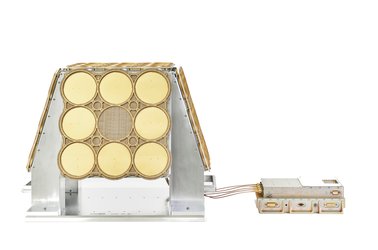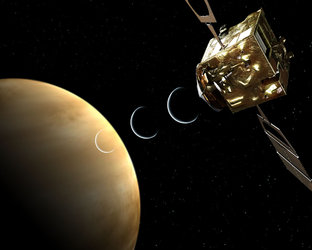Powerful compact corkscrew antenna for Earth-observing missions
A new high-power antenna the size and shape of a large ice cream cone will serve the data downlink needs of the coming generation of European Earth-observing satellites as they gather ever larger quantities of environmental data.
Despite its compact size, this antenna provides sufficient bandwidth and power handling to fly aboard the MetOp Second Generation, Copernicus Sentinel-6 and Biomass satellites. Earlier versions are already in service on the recently launched Aeolus wind mapper, and the RapidEye satellite constellation.
“While Earth observation satellites are acquiring much more environmental data than in the past, their actual satellite platforms are trending smaller,” explains ESA antenna engineer Peter Rinous. “The need became clear for a smaller, more powerful data downlink antenna. We identified the quadrifilar helix antenna as a promising design to push forward on.”
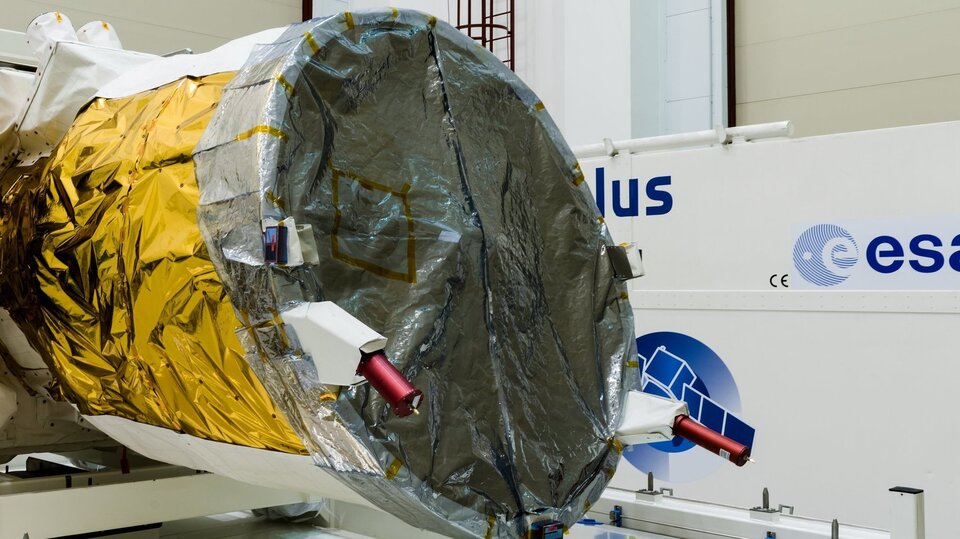
This new X-band design was developed for ESA by RUAG Space AB in Sweden through ESA’s General Support Technology Programme (GSTP), tasked with developing promising technologies for space and the marketplace.
Earth-observing missions, typically moving in close, rapid orbits around Earth, rely on what are called ‘isoflux’ antennas to relay their results to terrestrial ground stations – meaning their signal beam patterns are shaped in such a way so that the signal strength remains constant no matter what angle they are picked up from.

Previously, such patterns have been achieved with 40 to 50 cm diameter antennas – tough to accommodate aboard smaller satellite platforms. As an alternative, this new quadrifilar helix design is just 26 cm high by 10 cm in diameter.
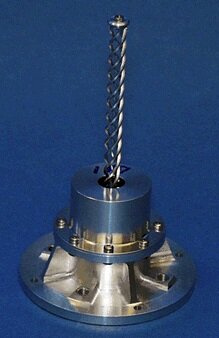
A quadrifilar helix is a cylindrical antenna with four strands of wire wound in a tight corkscrew. Isoflux coverage with this antenna is obtained through careful tuning of the geometrical parameters – length, diameter, pitch and the number of turns. Slight adjustments are all that is needed to serve a wide variety of satellites operating at different altitudes.
First introduced in the 1970s, such helix antennas have been employed extensively for telemetry, tracking and command purposes – downlinking satellite telemetry and receiving commands uplinked by ground controllers.
Look at any picture of an Earth-observing satellite to see a pair of these helixes – plus protective coverings– extending from opposing sides of its body. If contact with a satellite is lost, the aim is that these antennas can be used to re-establish control from the ground, from any direction.

“The idea of harnessing these helix antennas for higher-frequency, higher-bandwidth data downlink instead goes back to the first generation of MetOp weather satellites at the start of the century,” explains Peter.
“These large satellites host a variety of different antennas, including several low frequency helix antennas for data and search and rescue services; some with isoflux designs.
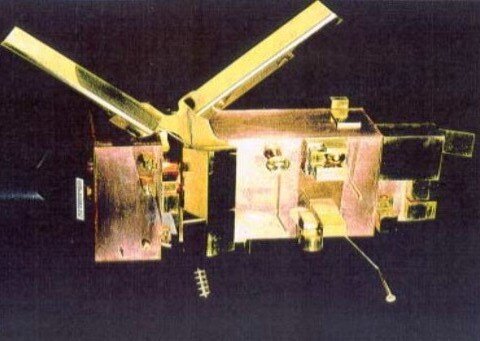
“What the mission team didn’t know beforehand was how well these helix antennas would operate in close conjunction on the satellite platform – would there be interference?
“So, to complement their computer simulations, Airbus Defence and Space built a scale model of the MetOp satellite incorporating scale model helix antennas working at higher frequency to make up for their smaller size.
“Once we saw these scaled-down designs, we had the idea: why not make working versions of these smaller quadrifilar helix antennas for space, operating at the higher frequency?”
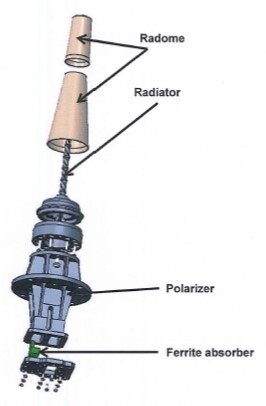
The first output of the resulting development project ended up aboard Aeolus – although the wind-mapper’s data downlink requirement is comparatively low compared to the follow-on missions the next version of this antenna will serve.
“This recently completed work by RUAG extends the antenna’s capability further, rendering it ready for a variety of future missions,” concludes Peter.
“This is really the role of ESA’s technology programmes: to ensure the right technology is available at the right time for missions to come.”















 Germany
Germany
 Austria
Austria
 Belgium
Belgium
 Denmark
Denmark
 Spain
Spain
 Estonia
Estonia
 Finland
Finland
 France
France
 Greece
Greece
 Hungary
Hungary
 Ireland
Ireland
 Italy
Italy
 Luxembourg
Luxembourg
 Norway
Norway
 The Netherlands
The Netherlands
 Poland
Poland
 Portugal
Portugal
 Czechia
Czechia
 Romania
Romania
 United Kingdom
United Kingdom
 Slovenia
Slovenia
 Sweden
Sweden
 Switzerland
Switzerland



























